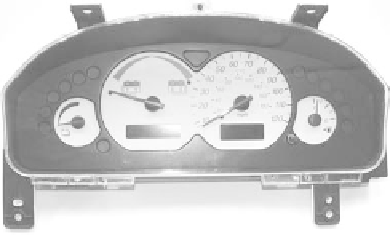Environmental Engineering Reference
In-Depth Information
Figure 4.58 Hybrid vehicle instrument cluster (from Reference 23)
illumination circuits on the HV cluster may also be different from a conventional
vehicle cluster.
4.8 Cost and weight budgeting
In this section, two illustrations of vehicle cost budgeting will be introduced. First,
the case of a fuel cell hybrid vehicle since it represents the most technologically
advanced case, and second, that of a mild hybrid. These two cases can be thought of
as representative of 'book-ends' in an overall technology cost assessment. A brief
illustration of weight budgeting will also be introduced.
4.8.1 Cost analysis
The cost breakdown of fuel cell stacks is shown in Table 4.26 for a 50 kW stack if it
were in mass production (
>
500,000 units/year - APV). In costing studies the var-
ious representations are (1) APV (annual production volume) or actual vehicles
produced and sold, and (2) FPV (financial planning volumes) for the more
upstream accounting and budgeting to meet specific corporation goals such as
CAF
´
and brand image.
Table 4.26 Fuel cell stack cost (DOE goal for 50 kW, 500,000 APV)
Component
Cost
2004
%
$
$/kW
$/kW
Anode and cathode layers
50
3,625
75
5
Electrolyte
20
1,310
25
5
Gas diffusion layers
5
420
5
5
Bipolar plates
15
1,035
20
N/A
Gaskets
5
380
10
5
Other
5
280
5
N/A
Total
100
7,050
140
N/A

















